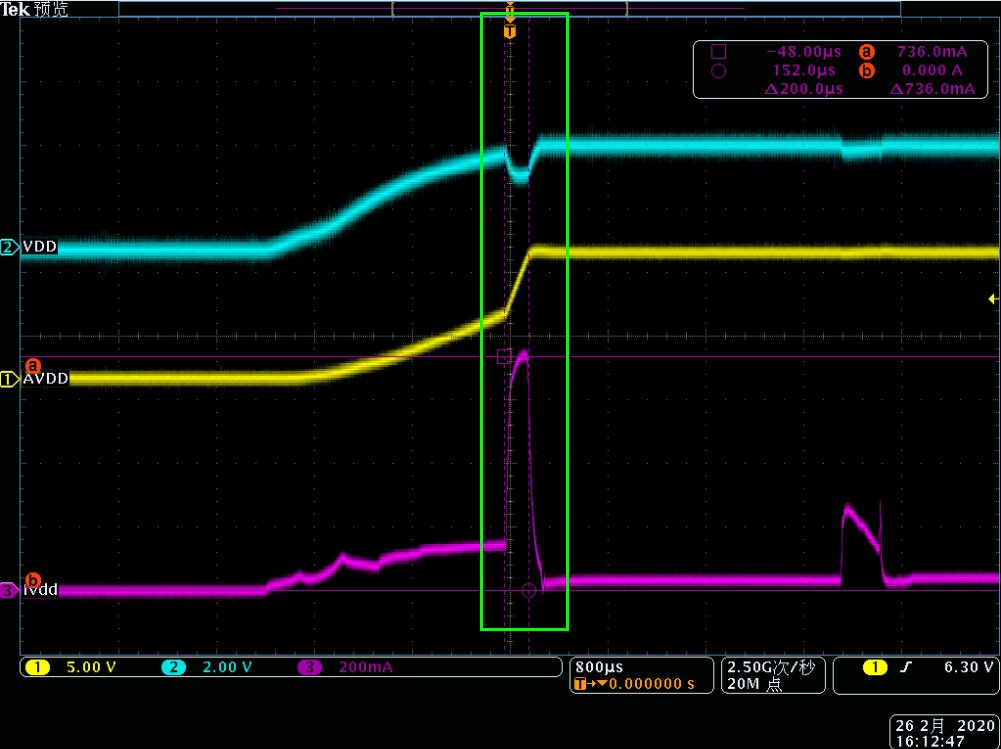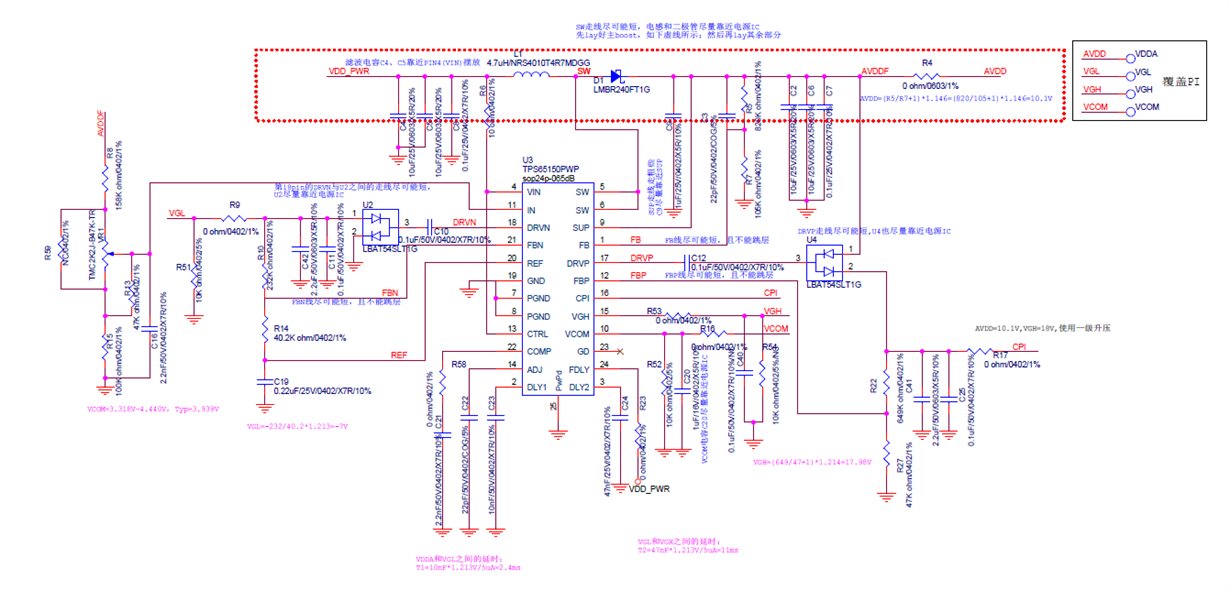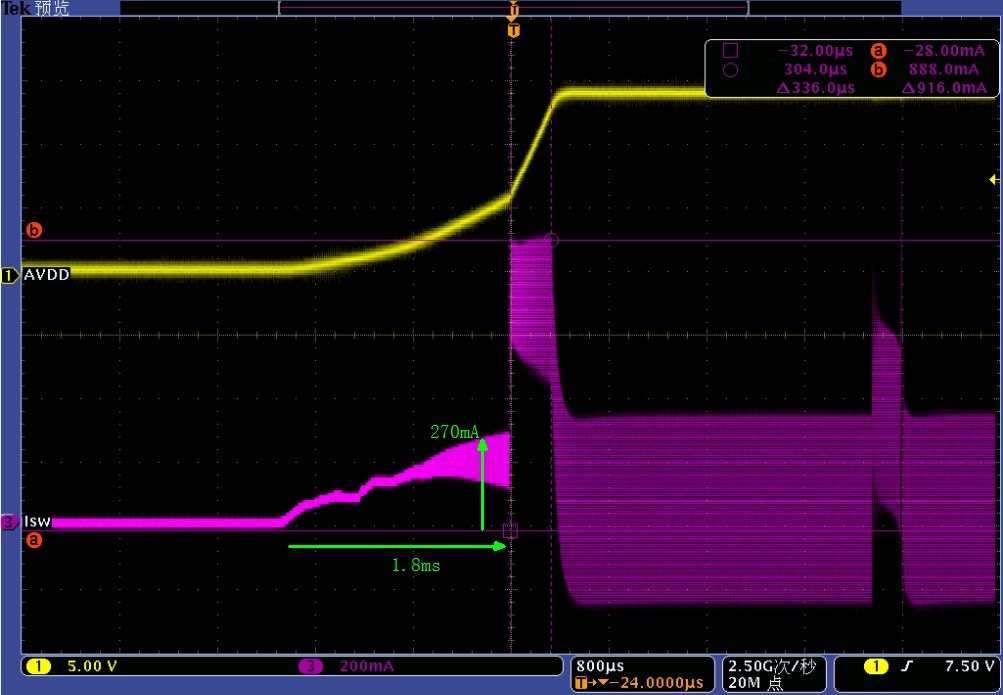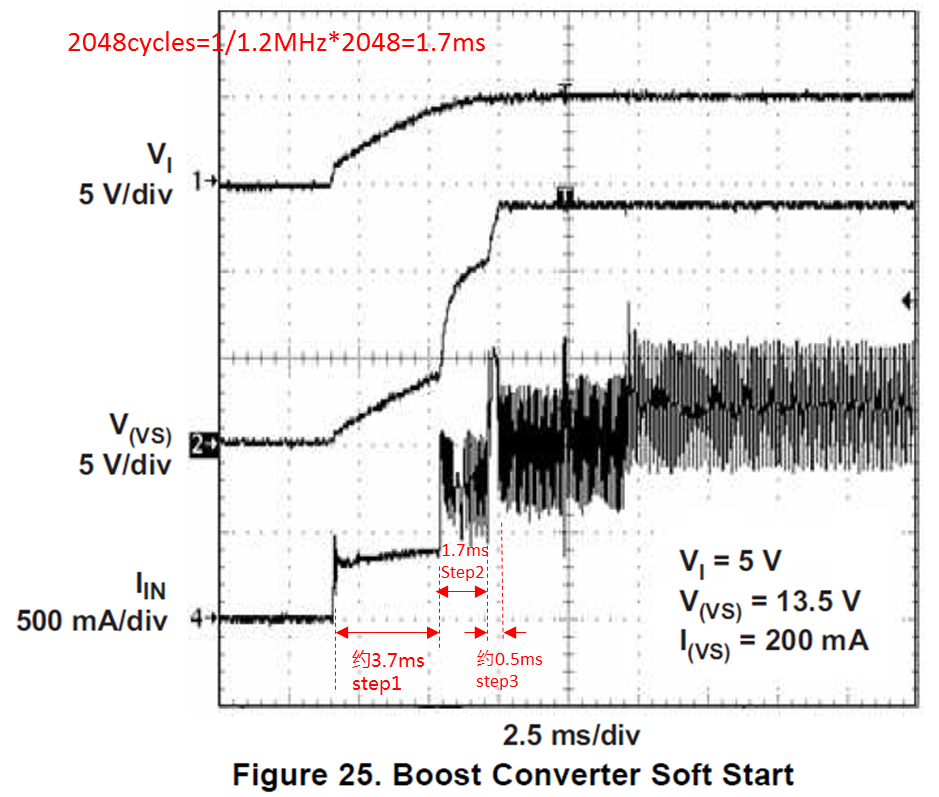Hello, when I test the Inrush current of VIN(VDD), there is a big current when Vs(AVDD) start up. Please refer to the picture1. It looks like there is two steps when AVDD start up, and in the first step, the skew rate is low, so the Inrush current of VDD is low. And in the second step, the skew rate of AVDD is higher, so the current is higher.
Is there any method to reduce the Inrush current in the second step?
I set 2 10uF capacitors on the AVDD, but even if I delete all the capacitors, the current is about 500mA. And I'd like to reduce the current to 300mA.
And also, according to the TPS65150 Datasheet, TPS65150 has soft start function, I want to confirm is there any relationships with the current of step 2? But actually I don't see 3 steps when I test the switch current (current of Inductance).





